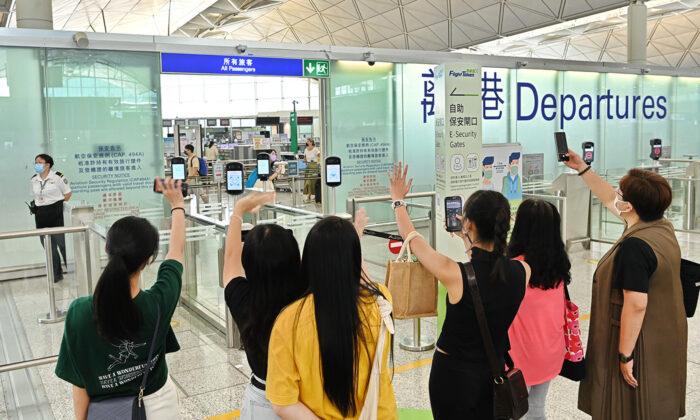The Goldman Sachs study predicts automation will generate new jobs, offsetting the historical replacement of workers. The report estimates that technological innovation will create most of the long-term employment growth, although the timing of this significant increase in economic growth remains uncertain.
The study projects that global annual productivity could increase by 1.4 percent over ten years with the adoption of AI. Hong Kong is anticipated to experience the highest growth, with an annual productivity increase of around 1.6 percentage points.
The Goldman Sachs study mainly focuses on Europe and the United States. In the U.S., the Occupational Employment and Wage Survey (OEWS) estimates that a quarter of current job tasks can be automated by AI, with seven percent of jobs likely to be replaced by AI. By comparison, 63 percent of jobs will be supplemented by AI for productivity, and 30 percent will not be affected.
The most “high-risk” jobs for AI replacement, ranked in descending order, are office and administrative support (46 percent of employment may be replaced by AI), law (44 percent), architecture and engineering (37 percent), life and social sciences (36 percent), business and financial operations (35 percent), and community and social services (33 percent).
In contrast, labor-intensive jobs such as construction (one percent), installation and maintenance (four percent), production work (nine percent), and transportation (11 percent) are less likely to be replaced. According to the Eurostat Labor Force Survey and other data, 24 percent of jobs are estimated to be replaceable by AI.
Nearly 30 Percent of Jobs in Hong Kong May Be Replaced by AI, Topping the World’s Economies
The study, which examined industry compositions in Europe and the United States, extrapolated its findings to the global job market while also considering that agriculture in emerging market economies would remain unaffected by AI due to significant disparities in production methods.The research reveals that, among 30 different regions worldwide, Hong Kong is at the forefront of the global trend, with almost 30 percent of its jobs likely to be replaced by AI. Developed market economies such as Israel, Japan, Sweden, the United States, the United Kingdom, and Singapore follow closely, with roughly 25 to 30 percent of their jobs vulnerable to automation. Argentina, an emerging market economy, is next with approximately 25 percent of jobs that could be supplanted by AI, tying with Europe as a developed market economy.
The Government Expects AI to Increase the Demand for Information Technology Workers
Hong Kong is poised to be at the forefront of AI replacement worldwide, partly due to its job structure. According to the Census and Statistics Department, around 88.5 percent of Hong Kong’s working population will be employed in service industries, including several high-risk job categories identified in Goldman Sachs’ study, such as finance, insurance, professional, scientific and technical services, administrative and support services, human health, and social work services. These industries account for a significant percentage of the working population, ranging from 5.4 percent to 7.6 percent. The other social and personal services category is expected to account for 12.5 percent of the total employment in 2021.The Census and Statistics Department’s “Manpower Projection Report 2027” predicts that AI development will increase the demand for IT professionals. In addition, due to the rapid development of financial technology, data analysis, AI, and cybersecurity, Hong Kong’s economy sectors will have a significant demand for IT talents with comprehensive knowledge and experience. Consequently, the overall market for IT practitioners is expected to grow at an average annual rate of 2.5 percent to 119,000 in 2027.
Conversely, the report expects a decrease in demand for less educated manpower by 2027 as Hong Kong shifts to a knowledge-based, high-value-added economy emphasizing creativity, professionalism, and AI application.
According to the Goldman Sachs study, AI adoption can increase labor productivity in the U.S. by 1.5 percentage points per year, similar to the impact of previous transformative technologies such as electric motors and personal computers. In addition, the study predicts that AI could increase global annual productivity by 1.4 percentage points over ten years, with Hong Kong expected to have the highest growth rate at approximately 1.6 percentage points.
However, the study acknowledges that the specific growth rate will depend on the difficulty of the tasks that AI can perform, the number of jobs that will eventually be automated, and the speed at which AI is adopted. The study estimates the most challenging tasks AI can perform as the baseline for estimation, which includes reviewing budgets, calculating adjustments to insurance claims, completing tax returns for small businesses, and planning and adjusting to-do lists for changing needs.




